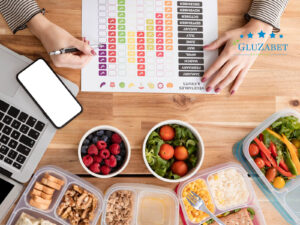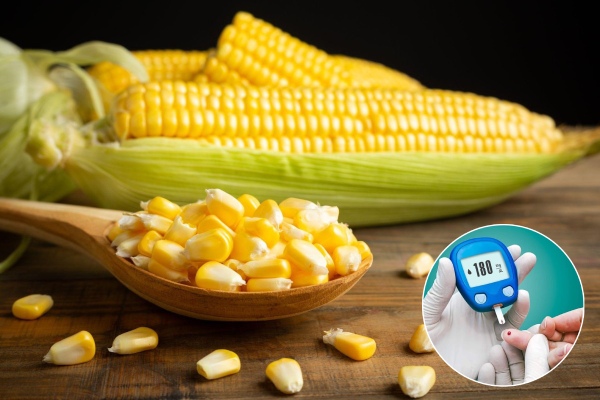Diabetic diet plan
A diabetic diet plan is important. It helps you stick to a healthy meal plan and activity can help you keep your blood glucose level, also known as blood sugar, within your target range. Friend. To manage your blood sugar, you need to balance what you eat and drink with physical activity and diabetes medication. What you choose to eat, how much you eat, and when you eat are all important in keeping your blood sugar levels within the range your doctor recommends.
Contents
- 1 Foods that are good for Diabetic diet plan
- 2 What foods should diabetics avoid
- 3 Nutritional needs for diabetics
- 4 Harmful effects of not having a diet plan in diabetics
- 5 How to calculate the amount of starch in food
- 6 Sample menu for diabetics
- 7 Good functional foods for diabetic
- 8 Notes when preparing food for diabetics
- 9 Common problems when dieting for diabetics
- 10 Conclusion
Foods that are good for Diabetic diet plan
- Green vegetables: Green vegetables are a great source of fiber and vitamin C for diabetics. In addition, green vegetables also contain many minerals such as potassium, magnesium and calcium. Greens that are good for diabetics include kale, cabbage, broccoli, morning glory, collard greens, spinach, pumpkin, pumpkin, tomatoes, peppers, cucumbers, carrots, white radishes, beets, and onions.
- Fruits: Fruits are an important part of the diabetic diet. They provide many vitamins, fiber and other nutrients. However, diabetics should choose fruits with a low glycemic index, which does not cause rapid hyperglycemia. Fruits that are good for diabetics include apples, pears, oranges, tangerines, strawberries, blueberries, kiwi, watermelon, melon, mango, lemon and grapes.
- Nuts: Nuts are a good source of fiber and fat for diabetics. They also contain a lot of protein and minerals such as magnesium, calcium and potassium. Nuts that are good for diabetics include almonds, pistachios, walnuts, cashews, pomegranate seeds, chia seeds and pumpkin seeds.

Some delicious dishes from the above foods
- Greens salad with pistachios: Mix greens like kale, cabbage, broccoli, water spinach with pistachios and some fruits like apples or pears. Mix up some spices like olive oil, apple cider vinegar and a little salt to add flavor to this salad.
- Sandwiches with chicken and greens: Choose whole wheat or whole wheat bread for sandwiches. Instead of using red meat, you can choose chicken or fish to lower cholesterol. Add more greens like collard greens, spinach and tomatoes to the sandwich for extra fiber and vitamins.
- Sweet sweet potato tea: Instead of using white sugar, you can use honey or palm sugar to make this tea sweeter. Sweet potatoes are also a good food for diabetics because they have a low glycemic index.
What foods should diabetics avoid
- Carbonated drinks: Carbonated drinks often contain a lot of sugar and have no nutritional value. If you want to drink carbonated drinks, choose unsweetened or low-sugar ones such as unsweetened soft drinks or natural fruit juices.
- Processed foods: Processed foods often contain a lot of sugar and fat, which is not good for diabetics. Avoid foods such as sweets, snacks, fried foods, and fast food.
- Starch foods: Diabetics should limit the use of starches such as bread, rice, noodles and potatoes. If you want to eat these foods, choose whole wheat or whole wheat to reduce the amount of starch.
Foods with high glycemic index
The glycemic index is an indicator of the ability of a food to cause hyperglycemia. Foods with a high glycemic index will cause hyperglycemia faster and are not good for diabetics. Here are some foods with high glycemic index:
- White bread: The glycemic index of white bread is 70.
- White rice: The glycemic index of white rice is 89.
- Potatoes: The glycemic index of potatoes is 85.
- Cookies: The glycemic index of cookies is 77.
- Pastry: The glycemic index of pastry is 70.
Nutritional needs for diabetics
In the diet plan diabetic, it need to maintain a balanced and nutritious diet to maintain health and control the disease. Here are the essential nutritional requirements for diabetics:
- Carbohydrates: People with diabetes need about 45-60% of total daily calories in their diet. However, they need to choose carbohydrates with a low glycemic index to reduce the risk of hyperglycemia.
- Fiber: Fiber helps maintain stable blood sugar and reduce the risk of complications of diabetes. People with diabetes should consume about 25-30g of fiber per day.
- Fat: People with diabetes should limit the amount of unsaturated and trans fats in their diet. Instead, they should choose good fats such as monosaturated fat and unsaturated fat.
- Protein: People with diabetes need about 15-20% of calories from protein daily. They should choose good proteins such as chicken, fish, eggs and beans to ensure a sufficient supply of the necessary amino acids for the body.

Harmful effects of not having a diet plan in diabetics
Uncontrolled eating can cause many harms for people with diabetes, including:
- Hyperglycemia: Uncontrolled eating can lead to hyperglycemia and make diabetes more difficult to control.
- Complications of diabetes: Without diet control, people with diabetes are at higher risk of complications of diseases such as cardiovascular, neurological, and vision.
- Obesity: Uncontrolled eating can lead to weight gain and obesity, increasing the risk of obesity-related diseases such as cardiovascular disease and type 2 diabetes.
- Lack of nutrition: Without controlling their diet, people with diabetes can lack important nutrients, which affect their health and make diabetes more difficult to control.
How to calculate the amount of starch in food
For diabetics, calculating the amount of starch in food is very important to control the amount of carbohydrates in the diet. Here are some ways to calculate the amount of starch in food:
- Use the glycemic index table: The glycemic index table will tell you the glycemic index of each food, so you can calculate the amount of starch in that food. A glycemic index above 70 is considered high, from 55-69 is medium and below 55 is low.
- Use the formula for calculating the amount of starch: The formula for calculating the amount of starch is (total carbohydrates – fiber) / 15 = the amount of starch. For example, if a food has 20g of carbohydrates and 5g of fiber, the amount of starch in that food is (20-5)/15 = 1g.
- Use a ruler: If you don’t have a glycemic index table or can’t calculate it, you can use a ruler to measure the amount of starch in food. A tablespoon of starch has about 15g of starch.
Here is a sample menu for diabetics:
- Breakfast: 1 cup unsweetened yogurt, 1 banana and 1 bowl of brown rice.
- Lunch: 100g grilled chicken, 1 bowl of brown rice and boiled greens.
- Dinner: 1 apple and 1 bowl of vegetable soup.
- Dinner: 100g grilled salmon, 1 bowl of brown rice and boiled greens.

Good functional foods for diabetic
In addition to following a diet, you can also use functional foods to support treatment and disease control in a diabetic diet plan. Here are some good supplements for diabetics:
- Green tea: Green tea is known for its many health benefits, including reducing the risk of type 2 diabetes and aiding in blood glucose control.
- Chia seeds: Chia seeds are a rich source of fiber and omega-3, which help maintain stable blood sugar and reduce the risk of complications of diabetes.
- Tomatoes: Tomatoes are high in antioxidants and fiber, which help control blood sugar and reduce the risk of complications of diabetes.
- Walnuts: Walnuts are a rich source of fiber and good fats, helping to maintain stable blood sugar and reduce the risk of complications of diabetes.
Notes when preparing food for diabetics
When processing food for diabetics, the following should be noted:
- Use foods with a low glycemic index: Choose foods with a low glycemic index to reduce the risk of hyperglycemia.
- Limit the use of sugar and salt: Sugar and salt can cause hyperglycemia and hypertension, so it is necessary to limit their use in the diet.
- Cooking using cooking methods such as steaming, boiling or baking: These methods help reduce the amount of fat and calories in food.
- Use good oils: Instead of using grease or cooking oil, use good oils such as olive oil, almond oil or coconut oil.
Common problems when dieting for diabetics
When dieting for diabetics, you may encounter some of the following problems:
- Difficulty in adhering to the diet: Changing the diet can be difficult and hinder the patient’s compliance.
- Lack of nutrition: If not planned carefully, diets can lead to malnutrition and affect health.
- Weight gain: Without controlling the amount of calories in the diet, people with diabetes can gain weight and have problems related to obesity.
- Discomfort and lack of satisfaction with taste: Changing the diet can make the patient feel uncomfortable and lack of satisfaction with his taste.
Conclusion
Diet is an important part of diabetes management. Patients need to follow a balanced diet and adequate nutrition to help control blood sugar and reduce the risk of complications of the disease. They should also use functional foods and be aware when processing food to support the treatment and management of the disease. However, changing the diet can also have some problems, so support and follow-up from a doctor and nutritionist is required.
Where to Buy Gluzabet Milk Products





